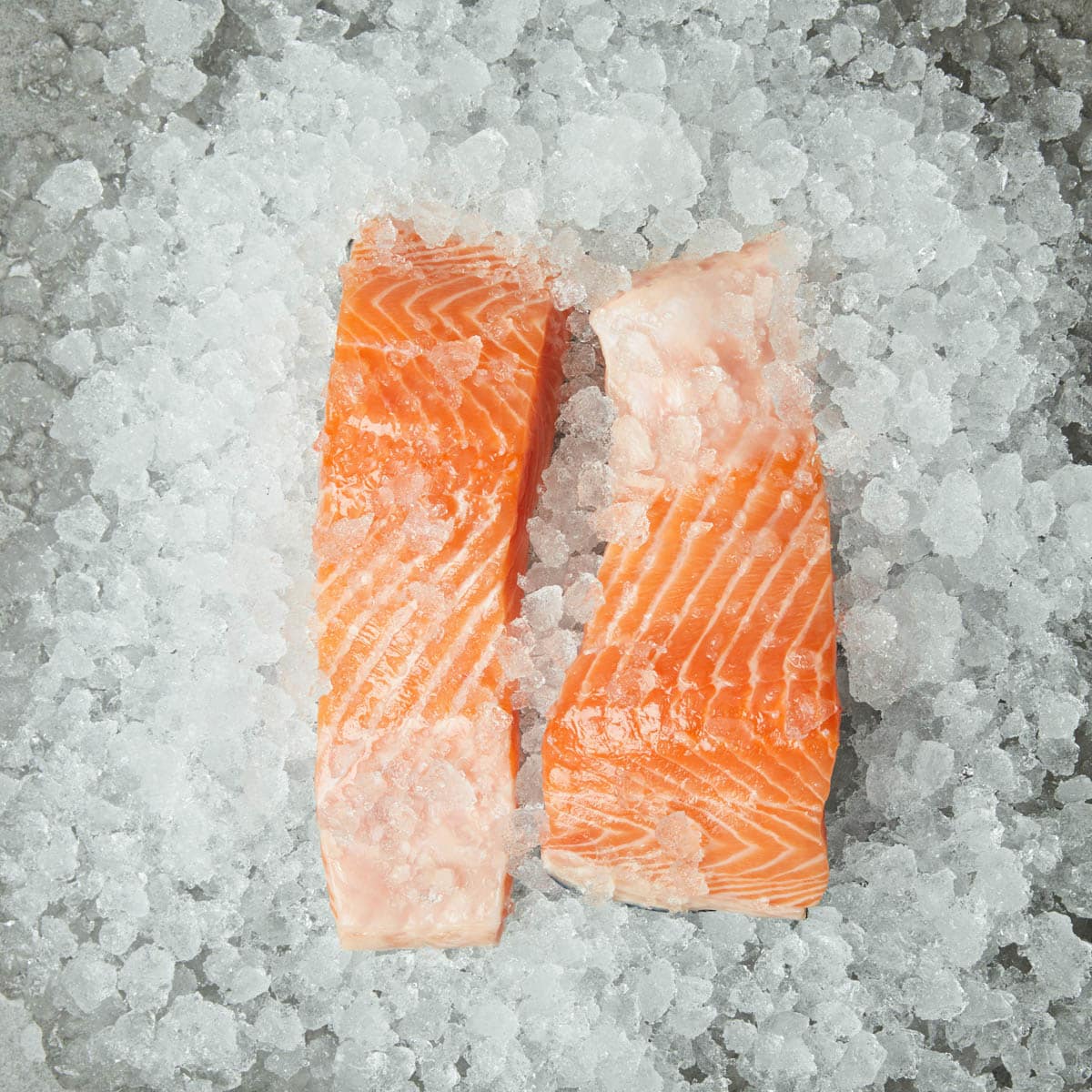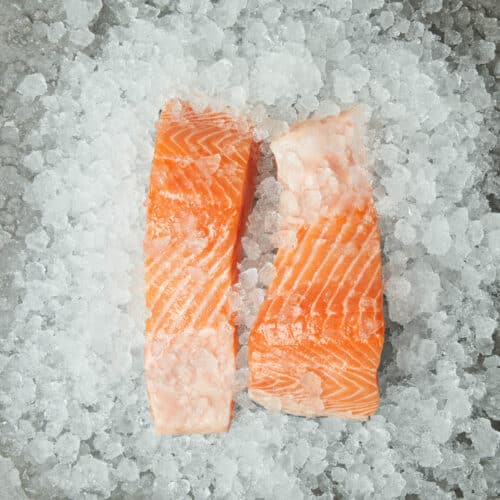How To Freeze Salmon
If you’re a fan of salmon, you’ll know there’s nothing quite like its unique, rich flavor. But whether you’ve scored a great deal at the local market, caught a surplus while fishing, or prepared a bit too much for dinner, you might find yourself with leftover salmon.
Fortunately, there’s a solution: freezing. With the right steps, you can keep your salmon in the freezer without sacrificing its taste or texture.
This comprehensive guide will walk you through how to freeze both raw and cooked salmon efficiently.

To freeze salmon, ensure it’s clean and dry. For raw salmon, vacuum seal it or wrap it tightly in cling film before placing it in a zip-top bag. Cooked salmon should cool to room temperature before being packed in airtight containers or heavy-duty freezer bags. Frozen salmon can last from 2 months to 2 years, depending on how it’s packaged.
How To Freeze Raw Salmon
When it comes to freezing raw salmon, you want to make sure that it’s as fresh as possible. The better the condition of your salmon when it goes into the freeze, the better it will be when it comes out.
Preparation
- Inspect the fish: Make sure your salmon is fresh. It should have a bright, glossy surface with a firm texture and mild scent.
- Clean the fish: Rinse your salmon under cold water, removing any dirt or loose scales, and then pat it dry with a paper towel to reduce freezer burn.
Packing
There are a few methods you can use to pack your raw salmon for freezing, but all are designed to reduce exposure to air.
Vacuum Sealing
This is the most effective method. Vacuum sealers remove all the air around the fish and seal it in a plastic bag. This will prevent freezer burn and keep the fish tasting fresh for the longest period.
Water Immersion
If you don’t have a vacuum sealer, you can use the water immersion technique. Place the salmon in a zip-top bag, slowly submerge the bag in water (keeping the open end just above the water line), then seal it.
The water pressure will push out most of the air from the bag.
Plastic Wrap
Wrap the salmon tightly in cling film, then place it in a zip-top bag. Remove as much air as possible before sealing the bag.
How to Freeze Cooked Salmon
Freezing cooked salmon is a great way to make your meal prep work for you, or to save leftovers from a particularly large feast.
Cool it Down
Before freezing, let your cooked salmon cool down to room temperature. However, don’t leave it out for more than two hours to avoid bacterial growth.
Package it Properly
Pack your cooked salmon in airtight containers or heavy-duty freezer bags. Just like with raw salmon, the key to preserving the flavor and texture of the cooked fish is to minimize its exposure to air.
While proper freezing can extend the shelf life of salmon, it’s crucial to recognize signs of spoilage such as a strong, sour smell, slimy texture, and dull, faded color before freezing, which you can learn more about in our guide on how to tell if salmon is bad.
Guidelines and Timing
| Vacuum Sealed | Water Immersion/Cling Film Wrapped | |
|---|---|---|
| Raw Salmon | Up to 2 years | 4 to 6 months |
| Cooked Salmon | Up to 1 year | 2 to 3 months |
Before opting for the freezing method, it’s worth understanding other effective ways to store your salmon, be it in the refrigerator or by using a marinade, which we’ve covered in our post on how to properly store salmon.
Frequently Asked Questions About How To Freeze Salmon
Conclusion
While fresh salmon is always a treat, freezing provides a wonderful way to extend the shelf life of this versatile fish.
By taking a few moments to package it properly, you can freeze both raw and cooked salmon, maintaining most of its quality for months to come.
So next time you have a salmon surplus, don’t fret – just follow this guide, and you’ll be savoring that delicious salmon flavor whenever the craving strikes!

How to freeze salmon
Equipment
- Cling wrap
- Airtight containers (for cooked salmon)
- Zip-top freezer bags
- Paper towels
Ingredients
- Fresh raw salmon or cooked salmon
Instructions
How to freeze raw salmon
- Inspect your fresh salmon. Rinse under cold water to remove any dirt or loose scales. Pat it dry with paper towels.
- Use one of the following methods: Vacuum Sealing: Place the salmon in a vacuum sealer bag and seal it.Water Immersion: Place the salmon in a zip-top bag, submerge it in water, then seal the bag.Cling Film: Wrap the salmon tightly in cling film, then place it in a zip-top bag.
- Place the sealed salmon in the freezer.
How to freeze cooked salmon
- Let the cooked salmon cool down to room temperature.
- Place the salmon in an airtight container or a heavy-duty freezer bag.
- Place the sealed container or bag in the freezer.

Online Cooking for Beginners Course